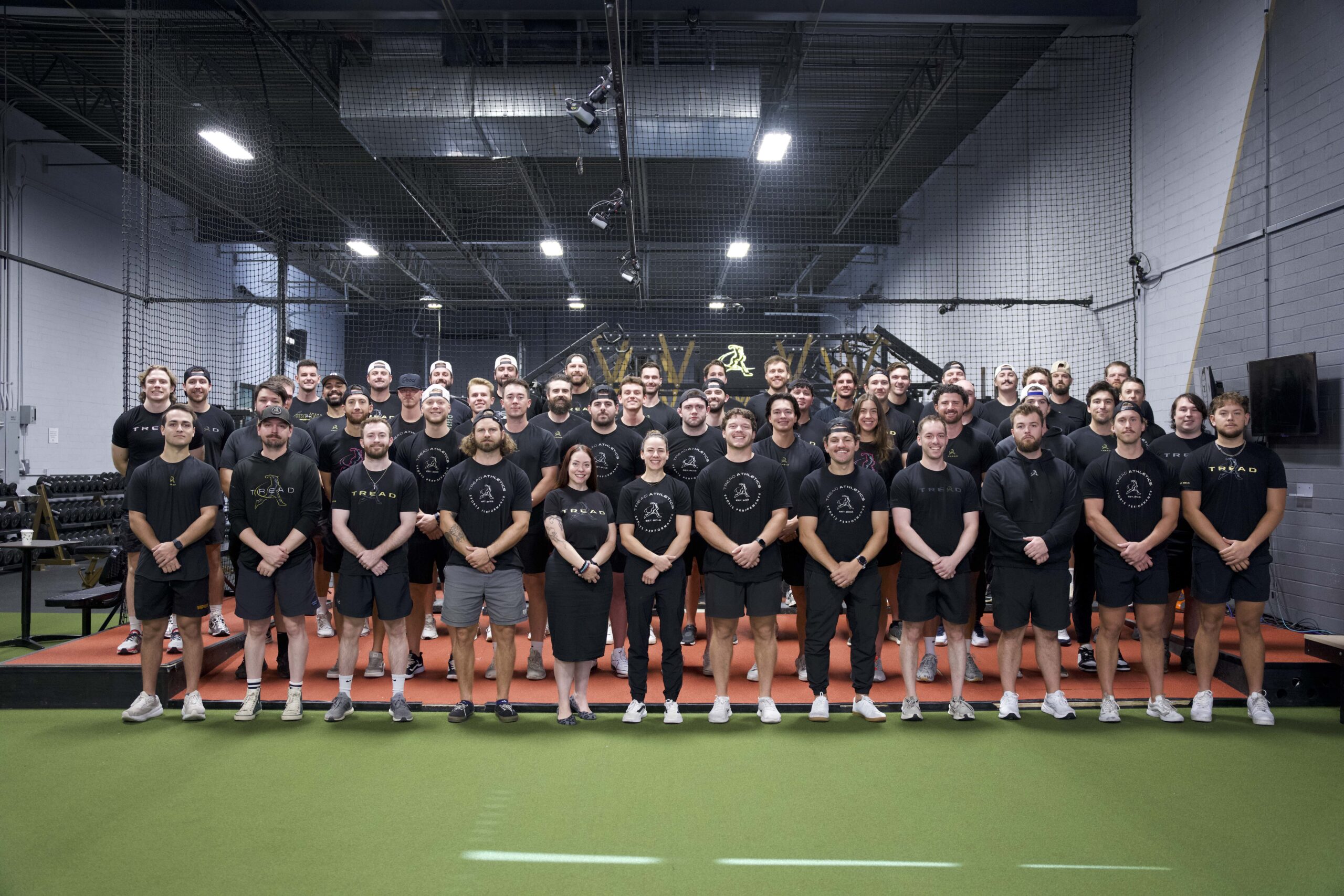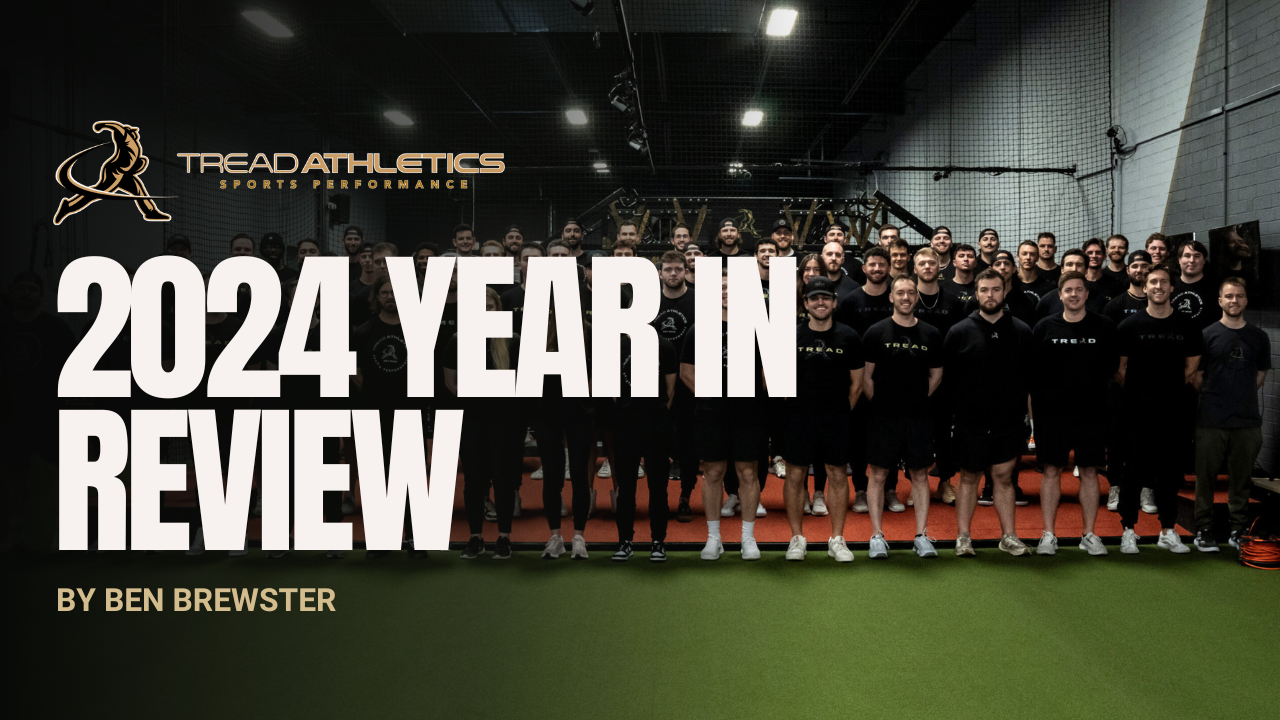By Ben Brewster
With Nate Pearson making his MLB Debut this week, running it up to 99 mph over 5 scoreless innings (and 104 mph in his career), what better time to dive into what makes him such an elite level thrower?
In part one of this segment, Remote Coach Graham Lehman gave us an in depth look into the physiological side of Nate Pearson, diving into his power metrics during a case study while at the College of Central Florida, and how the combination of his 6’6″ 245 lb frame and advanced power output contributed to his development of elite level velocity.
For this piece, let’s dive into his mechanics, and what contributes to his efficiency on the mound.
You can watch our entire video breakdown below. If you’d rather read, the rest of this article walks through the points made in the video. Disclaimer: we do not coach Nate personally. This is an exploration of his mechanics from afar.
1. Staying Stacked during the Linear Move
During his initial weight shift, Pearson stays stacked and centered over his pelvis and over his back heel, staying over his center of mass. A common mistake you see in throwers at any level is that the torso starts to tip forward (towards 3B for a righty) and there will be a gradual leaking forward over the toes during the initial move forward.
Please note: this does not mean he’s coming to a balance point, just that his torso is staying over the pelvis as he moves forward. You can check another example of this here.

Pearson holds this stacked position in his initial forward move, then loads into a rotational hinge which he rides down the slope (this rotational hinge is a coiling of the pelvis over top of the rear femur into hip IR).
As he begins to unload the pelvis into landing, Pearson is able to direct this move downhill. The direction of the rotation is all in the same plane from the hips, to the torso, to the arm – all unloading sequentially and in the same plane of rotation through release.
No vertical shin?
One interesting note about Nate Pearson, is that during his forward move a “vertical shin” is no where to be found, which is a common teach amongst pitching coaches (some even considering it an absolute tenet of efficient mechanics).
Into his drive phase, Pearson demonstrates an internal rotation dominant back leg as opposed to the external dominant “vertical shin” or what most would see as holding the knee over the toes for an extended period of time.
Something to keep in mind, this preference may be somewhat dictated by your hip anatomy and through trial and error to establish what ultimately works best for the athlete as far as velocity, command and feel are concerned.
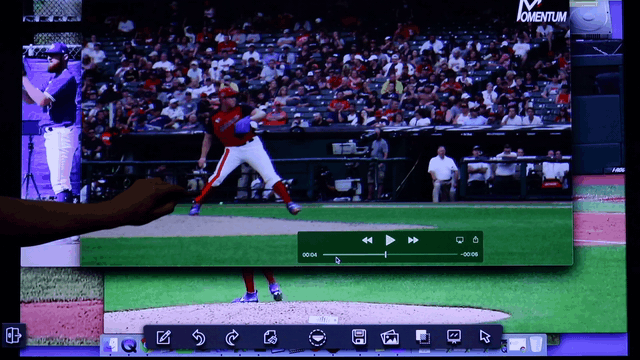
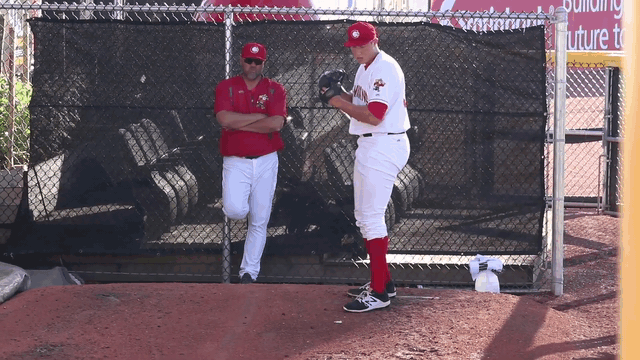
As he moves forward down the mound, Pearson loads into that hinge position, where the pelvis is coiled over the top of the femur (the “rotational hinge”).
If you notice his pelvic positioning, it is significantly turned over the femur, which creates a winding coil into the rear glute during the linear move. He holds this closed pelvis position as long as possible down the slope before releasing the pelvis just before FFS.
The idea of “rotating down into landing” is a cue or teach to encourage the athlete to open the pelvis on a downhill vector to ultimately match the plane of rotation of the shoulders. Another way of looking at this is not spinning into landing but landing “from above.”
2. Compact Arm Action
A common theme with hard throwing, taller athletes is that many of them benefit from a more compact arm action. This does not mean getting into a crazy degree of elbow flexion (i.e. hand to the ear), but managing the length of the arm spiral or downswing.
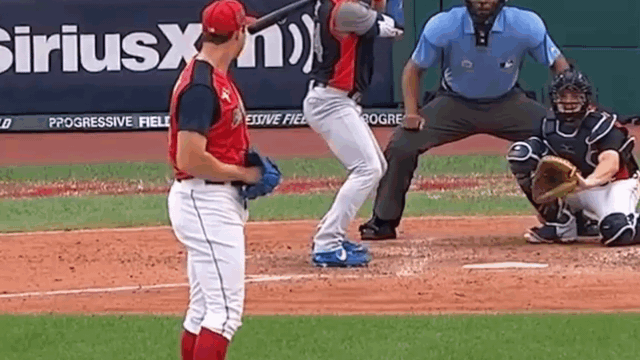
When you are dealing with guys with extremely long wingspans, keeping that arm bent closer to 90 degrees during the arm swing tends to help them repeat their release point and get the arm in the plane of rotation easier.
We don’t force these changes through, but if some tinkering and split-testing shows positive trends, we will often recommend they stick with the change provided they have enough time in the off-season to ingrain the new pattern.
Something to keep in mind when creating a compact arm action, we aren’t talking about tensing up the arm or yanking the hand in close to the ear.
As you can see below, Pearson is allowing plenty of scapular retraction to occur behind the body, letting the arm “float” into position so that he can keep the arm on time, allow it to flip up into landing and direct all of his rotation downhill.
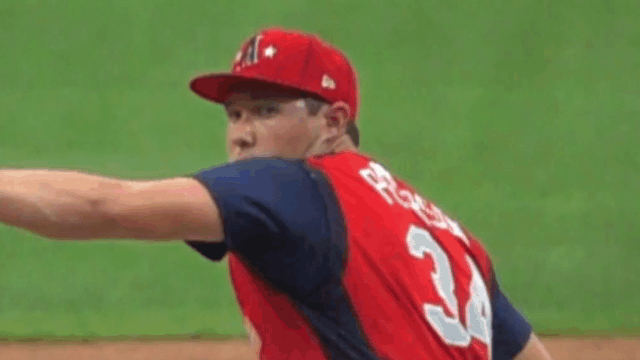
3. Properly Timed Intent
The video below mentioned an interesting fact: Nolan Ryan was one of Pearson’s idols and mechanical models growing up.
While the mechanical similarities are obvious, something worth mentioning is that both of them have a very high level of intensity in their deliveries, but without muscling up or ruining the flow of their patterns.
You may have heard this referred to as “intent” but I like to think of it as rotational violence as many coaches have pointed out the vagueness of the word “intent” to refer to this concept.
As you can tell in the video above, Nate Pearson clearly throws at a true 100%, but the application of intent is timed such that he isn’t ruining the smooth flow of kinetic energy from the ground/lower half.
We tell our athletes to “let the throw build” from the lower half, keeping the upper half relaxed through the linear move until that rotation up the chain ultimately triggers the reflexive stretch of the pec at FFS.
From there, Nate actively contracts to add to that stretch shortening cycle and is closing the gap as fast as he can, ripping through with his front side obliques and throwing arm pec / lat, as he finishes with electricity.
As a coach, you’ve got to be careful telling athletes to just throw with “intent” as it can ruin their sequencing and lead to the arm being added to the throw prematurely and “muscling up” the throw. You can learn more about that concept here.
4. Trunk Extension
Another interesting piece of Nate Pearson’s mechanics is the extreme degree of trunk extension. There is a common misconception about extension, the idea that you need to actively try to reach with your arm into ball release. You’ll see coaches and player’s set up a bucket out in front of them and actively do towel drills to reach out and hit the bucket as a way of faking their way to “getting out front”.

Trunk extension is a byproduct of a well sequenced load and unload and properly dissociating the pelvis from the torso.
Pearson organizes his body into an efficient position at FFS which triggers a rotational catapulting effect of the torso over the front side into release.
With his height and wingspan, this makes the perceived velocity of his 100 mph fastball even higher as he releases so close to the plate.
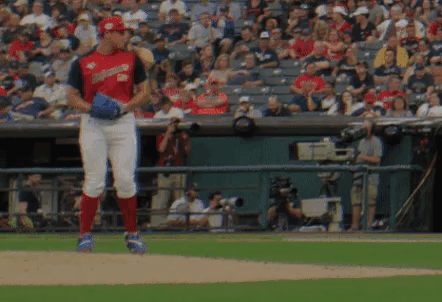
It can be hypothesized that this has something to do with the longer levers of these elite level throwers. For example, Arquimedes Caminero and others with extremely long arms often demonstrate greater trunk extension at ball release and appear to hold onto the ball a lot longer than guys with shorter arms. I don’t have anything concrete to back up this hunch yet but there seems to be a correlation.
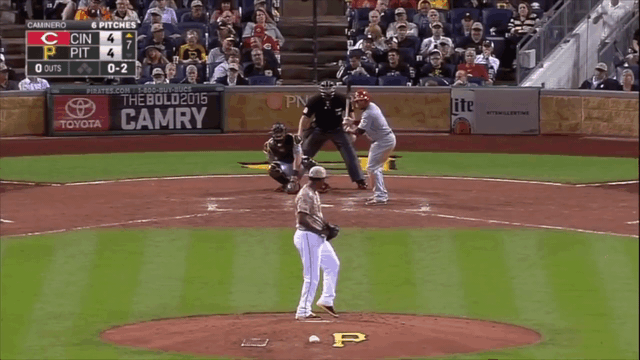
In short, when a coach says “get on top of the ball” or “get out front”, these are usually inefficient cues because the athlete yanks open the front side and tries to reach out and artificially create this extension.
Trunk extension is a byproduct of sequencing the start of the throw properly, not something we artificially force by reaching out as far as you can at the last second.
5. Genetics
This point is fairly obvious, but part of the reason why Nate Pearson throws so hard is because of his large frame and his genetics. There are a whole lot of things that have to go right to throw 104 mph.
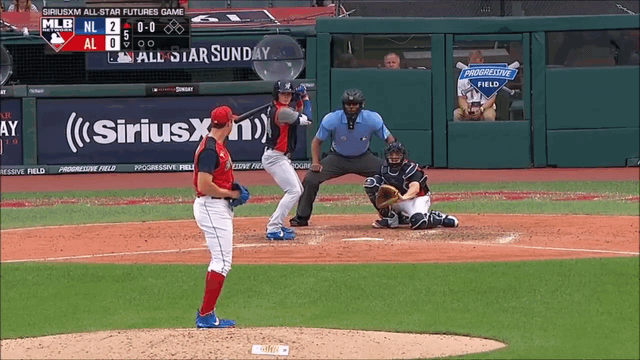
If you took Nate’s mechanics and put them on a shorter, less athletic, less explosive, less powerful athlete – maybe he tops out at 92 mph instead of 104 mph.
Throwing 100 mph certainly requires some sort of mechanical efficiency, but it is not as simple as saying “if you throw like this guy you will throw 100 mph.”
We all intuitively understand that the frame, genetics, power output, mobility, and many more variables ultimately influence the genetic ceiling an athlete has.
If you enjoyed this breakdown, check out our one-time analyses here.



